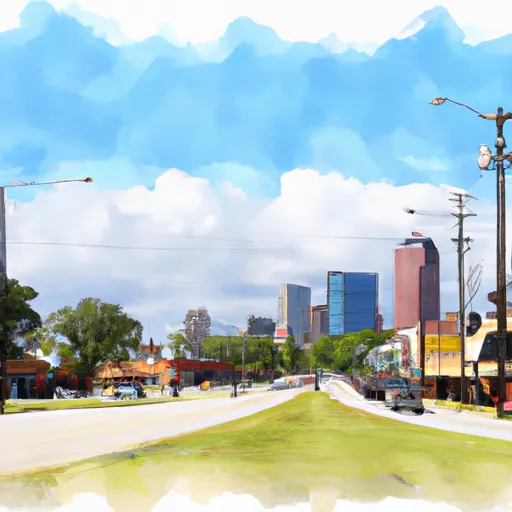-
 Snoflo Premium
Snoflo Premium
Get unlimited access to all our content
With no Ad interruptions! - Start Your Free Trial Login with existing account
Tomball
Eden Index
Climate
7.9
•
Recreation
3.1
•
Community
4.0
•
Safeguard
5.2/10

Tomball, Texas, located in Harris County, is a vibrant city with a population of over 11,000 residents. The city experiences a humid subtropical climate characterized by hot summers and mild winters. Average high temperatures in summer reach around 94°F (34°C), while winter lows can drop to around 41°F (5°C). Rainfall is abundant throughout the year, with an average annual precipitation of 49 inches.
The hydrology constituents of Tomball are shaped by its location near Spring Creek and Cypress Creek. These water bodies provide opportunities for various outdoor activities such as fishing, kayaking, and boating. The nearby Kleb Woods Nature Preserve offers nature trails where visitors can enjoy hiking and wildlife observation.
Tomball is also home to several parks, including Juergens Park and Burroughs Park, which provide amenities like picnic areas, playgrounds, and sports fields for recreational activities. The Tomball Golf Course is another attraction for golf enthusiasts.
Overall, Tomball's climate, hydrology constituents, and outdoor recreation opportunities make it an inviting destination for nature lovers and outdoor enthusiasts.
What is the Eden Index?
The Snoflo Eden Index serves as a comprehensive rating system for regions, evaluating their desirability through a holistic assessment of climate health, outdoor recreation opportunities, and natural disaster risk, acknowledging the profound impact of these factors on livability and well-being.
Climate Health Indicator (CHI): 7.9
Tomball receives approximately
1219mm of rain per year,
with humidity levels near 83%
and air temperatures averaging around
21°C.
Tomball has a plant hardyness factor of
9, meaning
plants and agriculture in this region tend to thrive here all year round.
By considering the ideal temperature range, reliable water supplies, clean air, and stable seasonal rain or snowpacks, the Climate Health Indicator (CHI) underscores the significance of a healthy climate as the foundation for quality living.
A healthy climate is paramount for ensuring a high quality of life and livability in a region, fostering both physical well-being and environmental harmony. This can be characterized by ideal temperatures, reliable access to water supplies, clean air, and consistent seasonal rain or snowpacks.
Weather Forecast
Streamflow Conditions
San Jacinto
Area Rivers
San Jacinto
Snowpack Depths
San Jacinto
Reservoir Storage Capacity
San Jacinto
Groundwater Levels
Recreational Opportunity Index (ROI): 3.1
The Recreational Opportunity Index (ROI) recognizes the value of outdoor recreational options, such as parks, hiking trails, camping sites, and fishing spots, while acknowledging that climate plays a pivotal role in ensuring the comfort and consistency of these experiences.
Access to outdoor recreational opportunities, encompassing activities such as parks, hiking, camping, and fishing, is crucial for overall well-being, and the climate plays a pivotal role in enabling and enhancing these experiences, ensuring that individuals can engage in nature-based activities comfortably and consistently.
Camping Areas
| Campground | Campsites | Reservations | Toilets | Showers | Elevation |
|---|---|---|---|---|---|
| Spring Creek Park | 11 | 184 ft | |||
| Brazos Bend State Park | 77 | 63 ft | |||
| Cagle Rec Area | 47 | 257 ft | |||
| Kellys Pond Dispersed | 8 | 237 ft | |||
| Stubblefield Lake | 60 | 219 ft | |||
| Huntsville State Park | 190 | 349 ft |
Catastrophe Safeguard Index (CSI):
The Catastrophe Safeguard Index (CSI) recognizes that natural disaster risk, encompassing floods, fires, hurricanes, and tornadoes, can drastically affect safety and the overall appeal of an area.
The level of natural disaster risk in a region significantly affects safety and the overall livability, with climate change amplifying these risks by potentially increasing the frequency and intensity of events like floods, fires, hurricanes, and tornadoes, thereby posing substantial challenges to community resilience and well-being.
Community Resilience Indicator (CRI): 4.0
The Community Resilience Indicator (CRI) recognizes that education, healthcare, and socioeconomics are crucial to the well-being of a region. The CRI acknowledges the profound impact of these elements on residents' overall quality of life. By evaluating educational resources, healthcare accessibility, and economic inclusivity, the index captures the essential aspects that contribute to a thriving community, fostering resident satisfaction, equity, and social cohesion.

